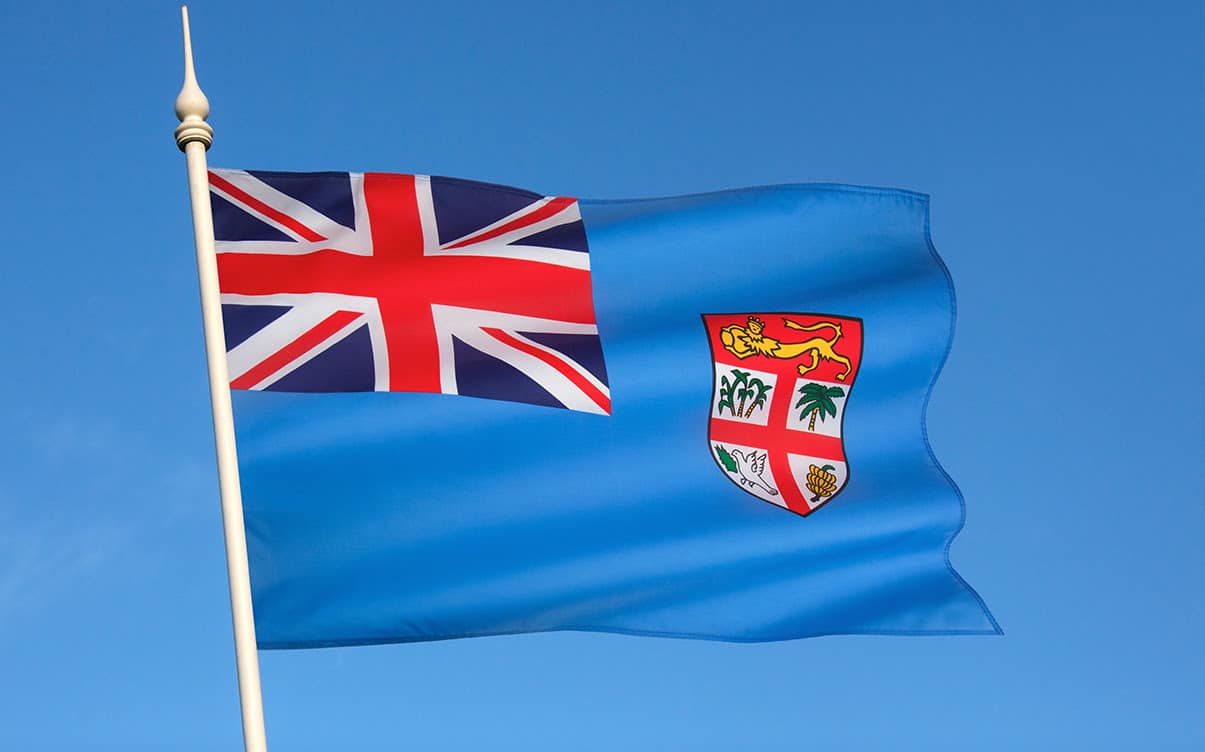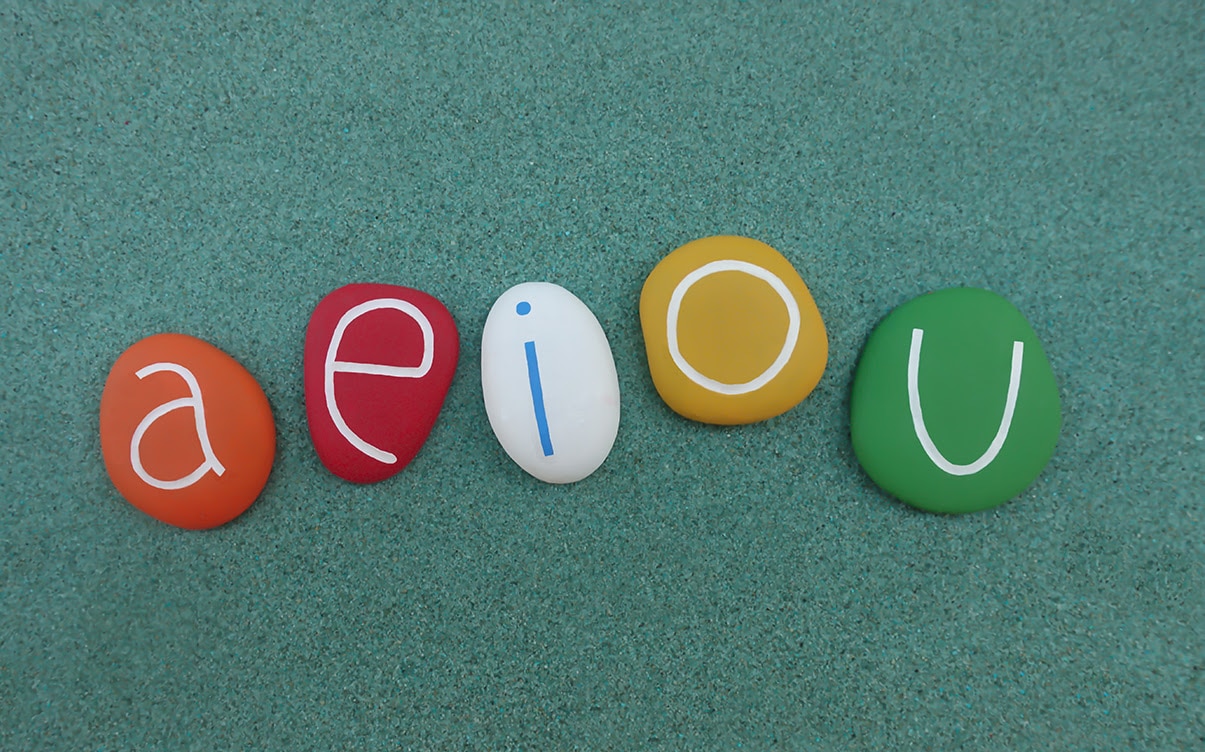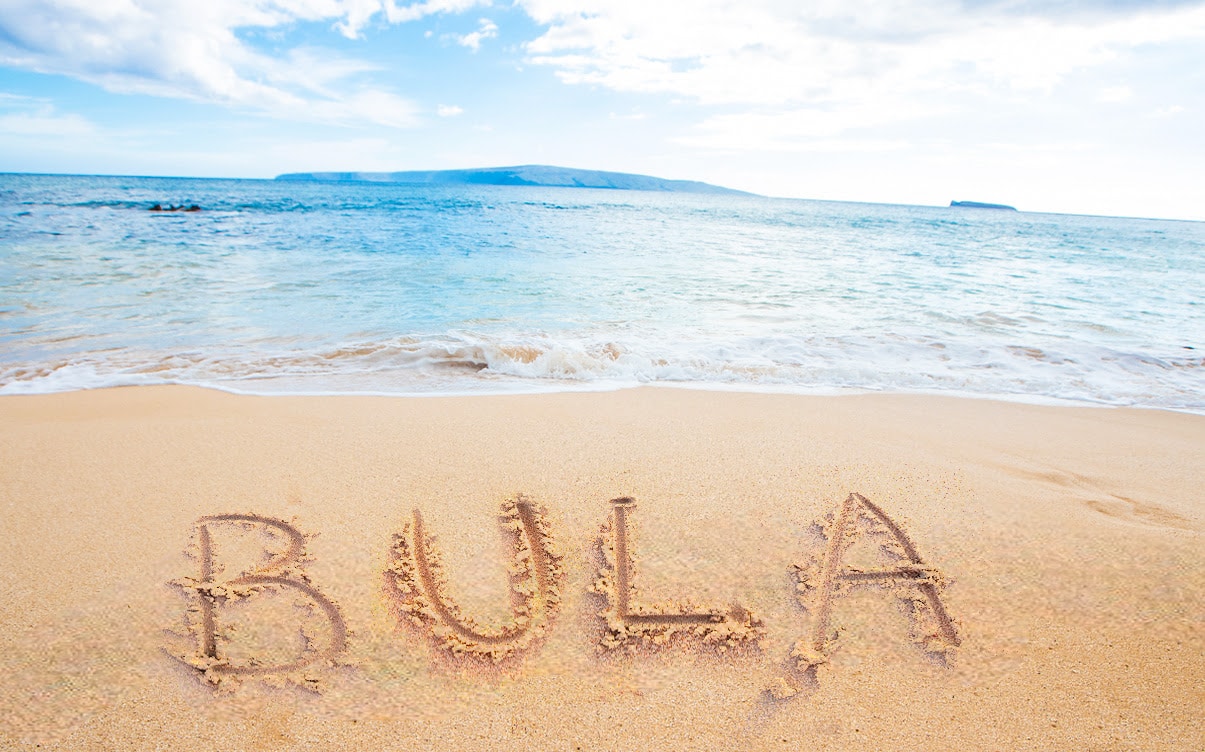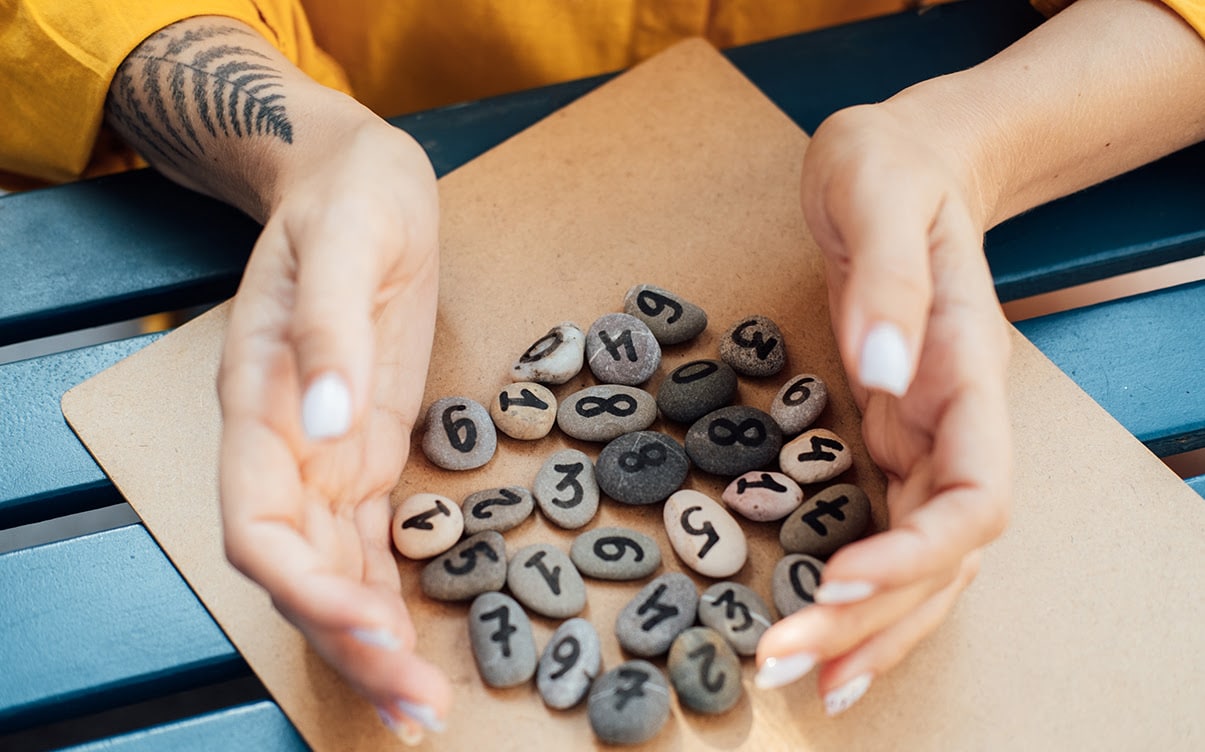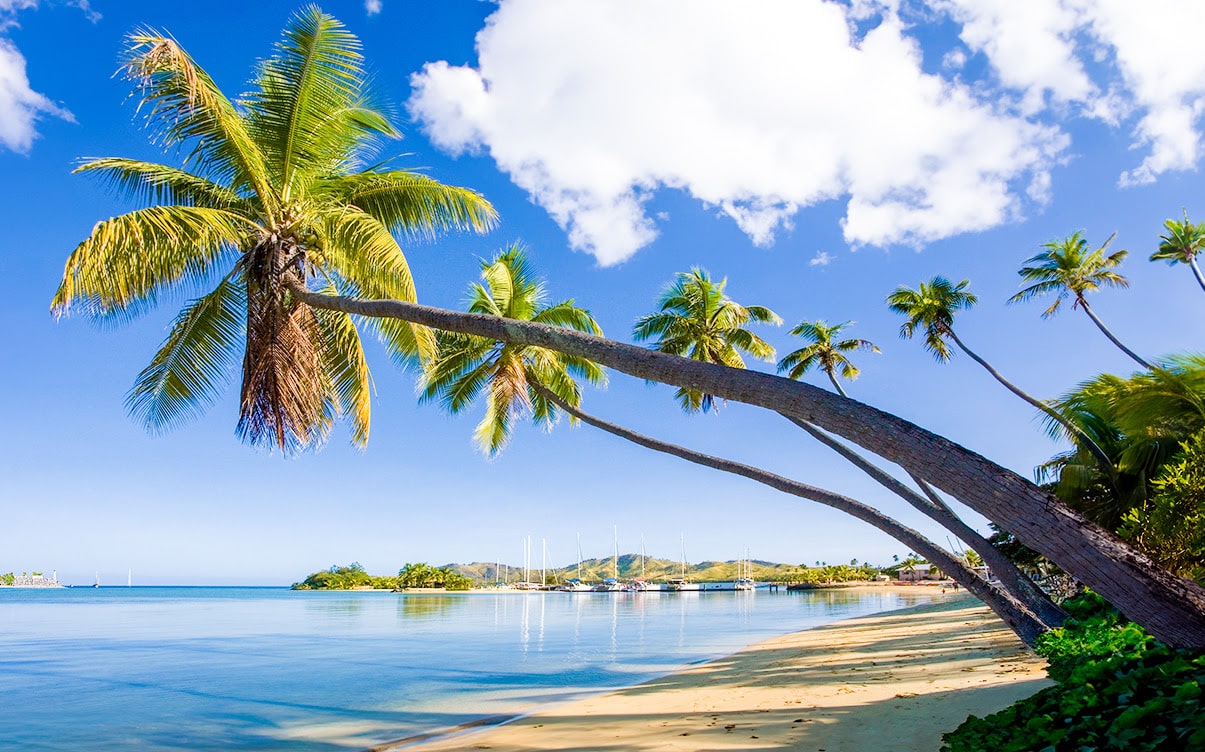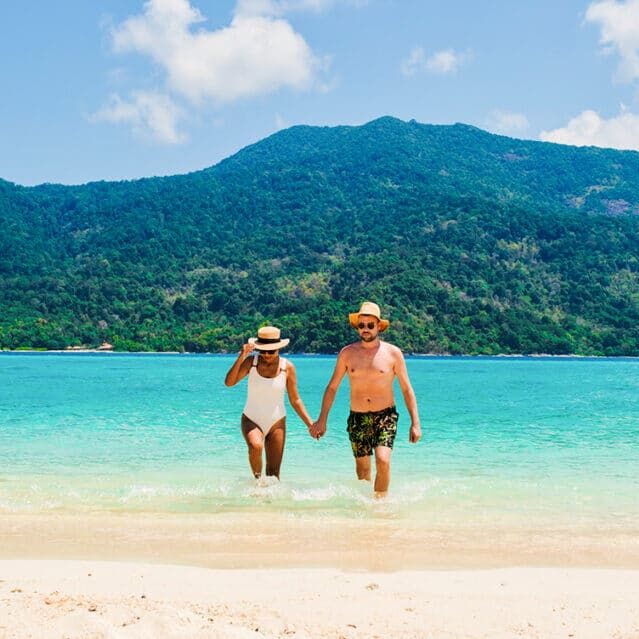How to Learn Common Fijian Phrases Before Visiting Fiji
Disclaimer: This post may contain affiliate links. Please see our Disclosure Policy and Advertiser Disclosure for details.

One of the biggest challenges with traveling the world is visiting countries where you don’t know the language. While many countries that have become common tourist destinations will have a significant proportion of the population speaking English as well as their native language, there are many cases where you might want to know at least a little bit of the local language when you visit.
- You plan to visit more rural areas where English might not be as common.
- Your destination country isn’t known for speaking English as a second language.
- You want to have some basic communication ability in case of emergencies.
- You simply want to show respect for the local population.
Fiji, located way out in the south pacific off the coast of Australia, had a long and rich history before the arrival of Europeans in the 17th century, and their local language is one of the cultural attachments that has survived through the centuries. This is despite English being instituted as the official language by British colonial rulers.
In fact, Fiji actually has three official languages. Fijian, Hindi, and English are all listed in their national constitution.
Fijian is common and can be divided into two different dialects, though they both overlap enough that you probably won’t have any issues with simple words and phrases being misinterpreted. In fact, Fijian citizens are generally friendly and welcoming and will praise even the clumsy attempts of an American who has never tried another language before.
Do You Need to Learn Fijian to Visit Fiji?
No, not really. English is the lingua franca, or common language, used in government, education, and services in Fiji. Road signs, billboards, business names, and everything you need to navigate will be largely in English, and the people generally speak English quite well. You won’t need to know a lick of Fijian to visit.
That said, it’s always a good idea to learn at least a few simple words and phrases, both to help make socializing a little easier and to earn a bit of gratitude from the locals for your effort.
So, if you want to learn, where should you start?
How do you Pronounce Fijian Words?
For the most part, Fijian can be written using English characters, but there are a few differences in how certain letters are pronounced.
For vowels:
- A is pronounced with an elongated sound, as in “car,” so more like “ah.”
- E is also elongated and is more like the eh sound in “head.”
- I is pronounced like the letter E, so like “see” without the S
- O is simply “oh”; not much difference there.
- U is also simply the “oo” sound in “moon,” again similar to most English.
Certain other letters have differences in pronunciation as well. The most common are:
- B has a slight M sound before it, as in the “mb” in “bamboo.”
- C is entirely different and is pronounced like the þ, or rather, just “th.”
- D, like B, has a leading sound, in this case, an N, like the nd in “sand.”
- G also has a preceding n, though the “ng” sound is common in English, like “rang.”
- Q is a hard G sound, like in “angry.”
- R generally has a roll to it similar to Spanish, but not quite as pronounced. It can be tricky if you’re not used to it, so don’t feel too bad if you don’t land it.
Just about everything else will be more or less how you expect it. And, really, your pronunciation doesn’t have to be perfect, as long as it’s close and you’re making the attempt. Native speakers will be able to tell whether or not, for example, you’re attempting to add the M noise to bula when you say hello and will know you’re giving it the effort.
So, what are some common and useful words and phrases you should try to learn before a trip to Fiji?
The Fijian Greeting, Bula
First up, we start with the word bula, which is essentially the equivalent of saying “hello.” The actual direct translation is “life,” and it’s used as a way to wish your fellows a good life, as a casual greeting. You’ll hear it all over the place in Fiji, and it’s the simplest and easiest word to pick up. If you learn only one word, make it this one. Remember the preceding M noise; pronounce it as “mm-boo-lah” for the most accurate greeting.
There are a bunch of different variations to bula that you might hear as you go.
For example, adding ni sa before a word like bula is a way to make it a little more formal. So, ni sa bula might be more appropriately translated as “welcome and salutations” or whatever more formal variation of hello you prefer. You can think of it as a combination of a hello and a more formal welcome.
Other Salutations
There are a variety of other salutations you might use in different situations, sort of like how in English we can say hello, or we can say good morning, good evening, see ya later, and so on.
First up, you have yadra. Remember the preceding N noise, so this is pronounced “Yandra” when you say it out loud. It’s the equivalent of “good morning” and is generally used earlier in the day when you see someone in the early hours.
Similarly, moce is a word with a couple of meanings. Translated literally, it simply means “to sleep,” but the word is actually used in two different ways. It can be used as a “good evening” greeting, often with the ni sa before it. Or, it can be used as a “goodbye” to wish someone well at the end of a day. Remember, the C is a Th noise, so say it like mothe or like “mother” without the R.
An alternative end-of-the-day farewell is sota tale, which doesn’t have a trick to the pronunciation except maybe the “leh” at the end, rather than a “lay” sound you might be inclined to add. This phrase means “see you later” or “see you again” and is best used when you’re wishing someone well at the end of a moment, but you plan to see them again later.
If you want to take one more step into conversation, you can learn something like o au mai, which means “I’m from.” We would say o au mai America or o au mai California, for example.
Common Etiquette and Politeness
Fiji is a highly Christian nation, and they put a lot of stock into politeness and being welcoming to one another. This is part of what makes them a very friendly nation to visit, so make sure to learn how to be polite in return!
The two most common words used for politeness are, of course, please and thank you. They’re also quite common in Fiji, so it’s worth learning them.
Please is kerekere and is a polite way to ask for help or ask to use something someone else is using or blocking. It’s not quite as general-purpose as please, but it’s definitely worth knowing.
Thank you is Vinaka, and you’ll come across it a lot. Remember, the I is long; “vee-nah-kah” is the appropriate way to pronounce this word. In casual conversation – as a short version, the way you might say “thanks” instead of “thank you,” it’s often shortened to lose the vi and is just naka. Simple enough, right?
Similarly, if you wanted to express even more gratitude – as in, “thank you so much” – you would add onto it. In that case, it’s Vinaka vaka levu, which is fairly common in cases where you’re shopping with or dining with a local business.
Another bit of politeness you can learn is how to say you’re sorry. The simple “I’m sorry” is vosoti au, which is something like “voh-sah-tee ow” in how you say it. There’s not much to elaborate on here; hopefully, you won’t need to use it much.
Basic Communication
There are a lot of simple words and phrases you will find useful to know as you go about your vacation in Fiji. Again, while you can express yourself just fine in English and be fully understood, it’s nice to make an effort to learn some basic Fijian to do the same.
- Yes. The affirmative is simple io, with the long I, so “ee-oh.”
- No. The opposite, the negative, is sega. Remember, though, the preceding N sound; it’s “senga.”
Another more complex phrase you might want to learn is how to say you don’t understand something. If you find yourself in a tricky situation where someone is explaining in Fijian, but you don’t know enough to parse it all, you can say Au sega ni taura rawa in response. You already know sega from “no” above, so it should be easy to practice, though, honestly. You probably won’t need it.
You can also learn the basic questions you might need to ask along the way.
- Where is X? E vei is the “where is” element, and you can add another word, like vale lailai, which is “toilet.”
- How much is it? If you’re shopping, it’s worth knowing how to ask about prices, which is simple. Just say e vica to ask.
One you might want, but also might not, is o naica na guana, which means “What time?” You can use it to ask what time an event will be or when you should go somewhere. But, at the same time, Fiji is a very laid-back country, and a lot of your vacation is on “island time,” where the exact schedules may not necessarily be meaningful. So, maybe it’s not as important, eh? It’s all good, sega na leqa, no worries!
Speaking of time:
- Mataka is morning
- Yakavi is afternoon
Easy enough.
It can also be useful to know a few words for various nouns you might need to know along the way. In no particular order:
- Water is wai
- Food is kakana
- Coffee is kofi, simply enough
- Bill or Check/Cheque is Saini
- Bus is basi
- Taxi is taki
- Airport is more complex; it’s waqarere ni waqavuka
- Ticket is tikineti
Combine a couple of these logically; for example, how might you ask for breakfast? Think “morning food” here; it’s kana ni mataka.
Counting Down the Time
If you want to learn basic numbers and counting, it’s not too bad.
- Dua
- Rua
- Tolu
- Va
- Lima
- Ono
- Vitu
- Walu
- Ciwa
- Tini
Counting from 11-19 is just saying “ten and one” or “ten and two” and so on, where the “and” is ka. So, to say 15, you’d say tini ka lima. 20 is ruasagavulu, a step up in difficulty, but counting past that adds on the “and one” and so on. Pop quiz: what number is ruasagavulu ka va?
Honestly, you probably don’t need to learn the number system to get around Fiji. At most, it might be a good idea to learn the street address or room numbers most relevant to your trip; if you’re in resort number 13, learning how to say tini ka tolu might be all you need.
You can learn higher numbers and ordinal numbers and see a video of how they’re all pronounced on this page.
Enjoying the Islands of Fiji
How much of all of this do you need to enjoy Fiji? Honestly, pretty much none of it. English is perfectly acceptable almost anywhere you would go in the archipelago. Learning some simple words and phrases – or even a few slightly more complex words and phrases – can put you in good graces and bring up big smiles from people used to serving tourists with no idea what Fijian even is.
However much you choose to learn, we know you’ll love your time in Fiji!
So, now that you’ve reached the end of this article, do you have any questions about Fiji, the Fijian language, or anything else we discussed in this article? If so, we’d be more than happy to help! Just let us know!
You may also enjoy:

